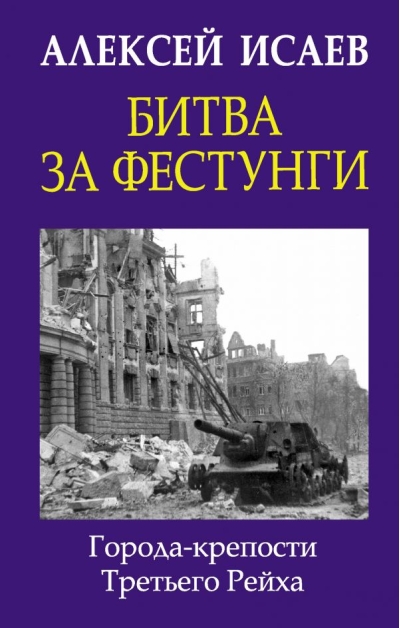The Battle of the Festungi. The fortress cities of the Third Reich
9.99 €
Out of stock
The Third Reich started World War II relying on the most advanced
dive-bombers, tank wedges, airborne assaults and psychostimulants. But as fronts in the east and west swung toward the heart of Germany, German commanders began to look to the past for support. Hitler himself then proposed the idea of "fortresses" (Festung) - fortified cities fighting in encirclement. Beginning with the dubious successes of Tarnopol and Kovel in the spring of 1944, the practice of fortress cities failed completely during Operation Bagration, but unexpectedly revived widely in the last months of the Reich: Poznan and the pinnacle of the Festung - Breslau. This book by a leading military historian, based on both German and recently declassified Soviet documents, reconstructs in great detail the course of the struggle against the "fortresses" that created considerable problems for the Red Army. The battle for the festungi was truly a battle in the stone jungle - it was fought in the ruins of old and new buildings, half-abandoned forts, spacious workshops and the chemical weave of urban communications. Flamethrowers, explosive charges and armored vehicles were used, while doomed garrisons were repulsed with faustpunches and improvised weapons. The unusual experience of the Festung deserves thoughtful analysis, because in our urbanized era it may be needed in the future.
dive-bombers, tank wedges, airborne assaults and psychostimulants. But as fronts in the east and west swung toward the heart of Germany, German commanders began to look to the past for support. Hitler himself then proposed the idea of "fortresses" (Festung) - fortified cities fighting in encirclement. Beginning with the dubious successes of Tarnopol and Kovel in the spring of 1944, the practice of fortress cities failed completely during Operation Bagration, but unexpectedly revived widely in the last months of the Reich: Poznan and the pinnacle of the Festung - Breslau. This book by a leading military historian, based on both German and recently declassified Soviet documents, reconstructs in great detail the course of the struggle against the "fortresses" that created considerable problems for the Red Army. The battle for the festungi was truly a battle in the stone jungle - it was fought in the ruins of old and new buildings, half-abandoned forts, spacious workshops and the chemical weave of urban communications. Flamethrowers, explosive charges and armored vehicles were used, while doomed garrisons were repulsed with faustpunches and improvised weapons. The unusual experience of the Festung deserves thoughtful analysis, because in our urbanized era it may be needed in the future.
See also:
- All books by the publisher
- All books by the author
- All books in the series Essential books on war. The true history of the great wars



